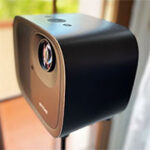The ETOE E3 Pro is a fairly inexpensive projector that aims at offering a cinematic experience to the people that don’t really have the space for a large TV. So, just point the portable device at a wall and you’re good to go.
| ETOE E3 Pro | |
|---|---|
| EtoeOfficial.com | Check Product |
| Amazon.com | Check Offer |
But, I have grown wary of budget-friendly projectors because some corners had to be cut to keep the cost low, so what does the ETOE E3 Pro promises and most importantly, does it manage to deliver on those promises? The manufacturer says that the projector offers 1080p footage (it is not simulated, the projector is not using a DMD chip), two 10W speakers, one pointing forward, the other backwards and it seems that the projector relies on two cooling fans to keep the temperature low (the noise level is acceptable).
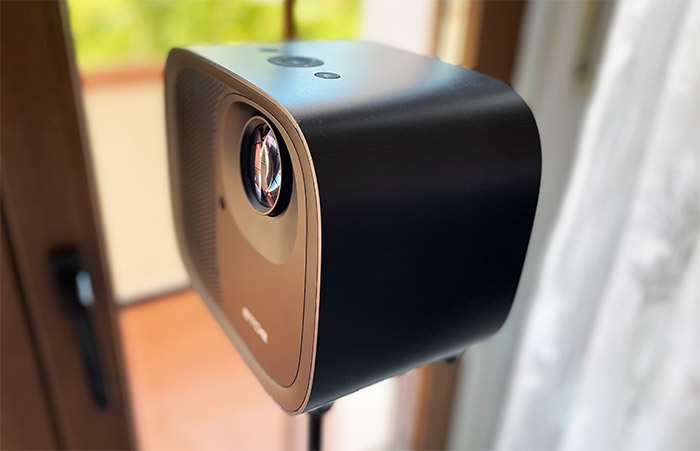
But I also saw that the ETOE E3 Pro offers both auto-focus and auto-keystone correction which are some of the best features to have on a projector – I’ve seen them in action on the XGIMI Halo Plus and the Horizon Pro, and they were a game changer. I did take a sneak peak inside the device and as you will see, the projector is actually low-key modular, although I am not sure that was the actual intention from the manufacturer.
The ETOE E3 Pro relies on an external Android box and I am fairly sure that you can swap it for something better if you’re not satisfied with the performance of the current mini computer. That being said, let’s put the device to the test and see how well it performs, especially when there are so many competitors out there.
UPDATE 04.25.2023: I have updated the firmware to the version V.3.02.24 and the sound discrepancy between the projector and the Android box is now fixed. Follow these instructions to upgrade your ETOE E3 Pro if you experience the same problems as I did.
The Design and Build Quality
I mentioned that the ETOE E3 Pro is compact and it’s true that the projector is smaller than the older gen projectors, but it can’t really be considered portable. Or can it? The ETOE E3 Pro measures 5.9 x 5.1 x 4.3 inches (or 15.0 x 13.0 x 11.0cm), so it’s about the same size as the Horizon Pro, but we are dealing with a budget-friendly device, so the enclosure is not made of metal, no, it’s all plastic.
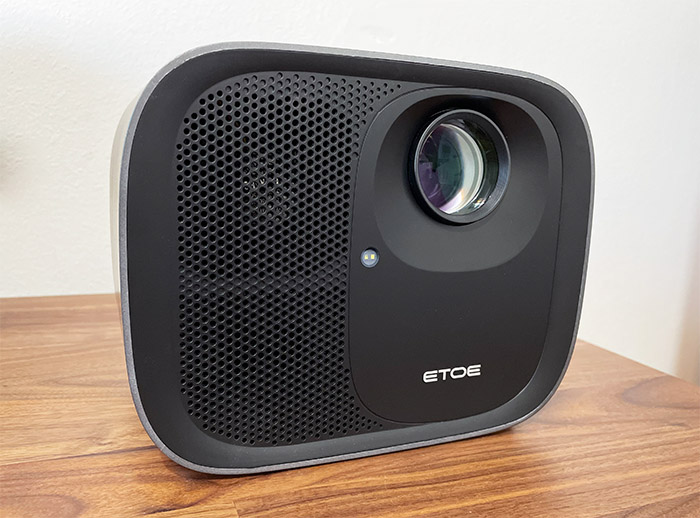
As a consequence, the projector is fairly lightweight, and at its 3.57lbs (or 1.62kg), I guess you can actually move it around with ease, but we will see if the auto-focus and auto keystone correction will make changing locations frequently a painless process. The interesting thing is that the projector does come into a travel case, so you should be able to take it with you, but bear in mind that it has no inner battery (then again, you can use something like an Allpowers portable battery). The developers went with an outer shell that surrounds the device from top to bottom and there are three circular holes at the top for the physical buttons.
There is a Power button with an LED and a Return button on the other side, while in the middle, there is a larger, D-Pad-type set of buttons. In the center, there’s the OK button (Enter), while on the sides, there are four arrow buttons for navigation. You can also use them for adjusting the volume (short press) or to Fast forward / backwards, when you long-press the buttons – at least that’s what’s advertised because I did try to adjust the volume via the physical buttons and it didn’t work.
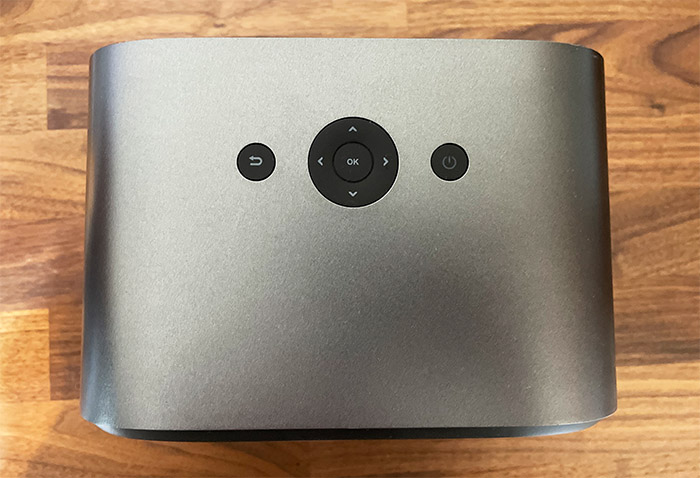
On the bottom, there are four feet with silicone covers to keep the device into place, but I am sure a lot of people will prefer mounting the projector on a tripod – yes, there is a mounting hole to help you do just that. There are no ventilation holes on the sides, but you get plenty on the rear side, as well as on the front, next to the lens. Are they enough to keep the temperature low? I saw that the device does use a couple of fans to cool down, as well as a large copper heatsink, so it should be fine.
But I also took out a thermal camera to check how hot it can get and you can see the result yourself. The rear panel of the ETOE E3 Pro is a bit peculiar because underneath the ports, there is a section called TV and it can be opened to reveal an Android box that’s connected via USB-C ports.
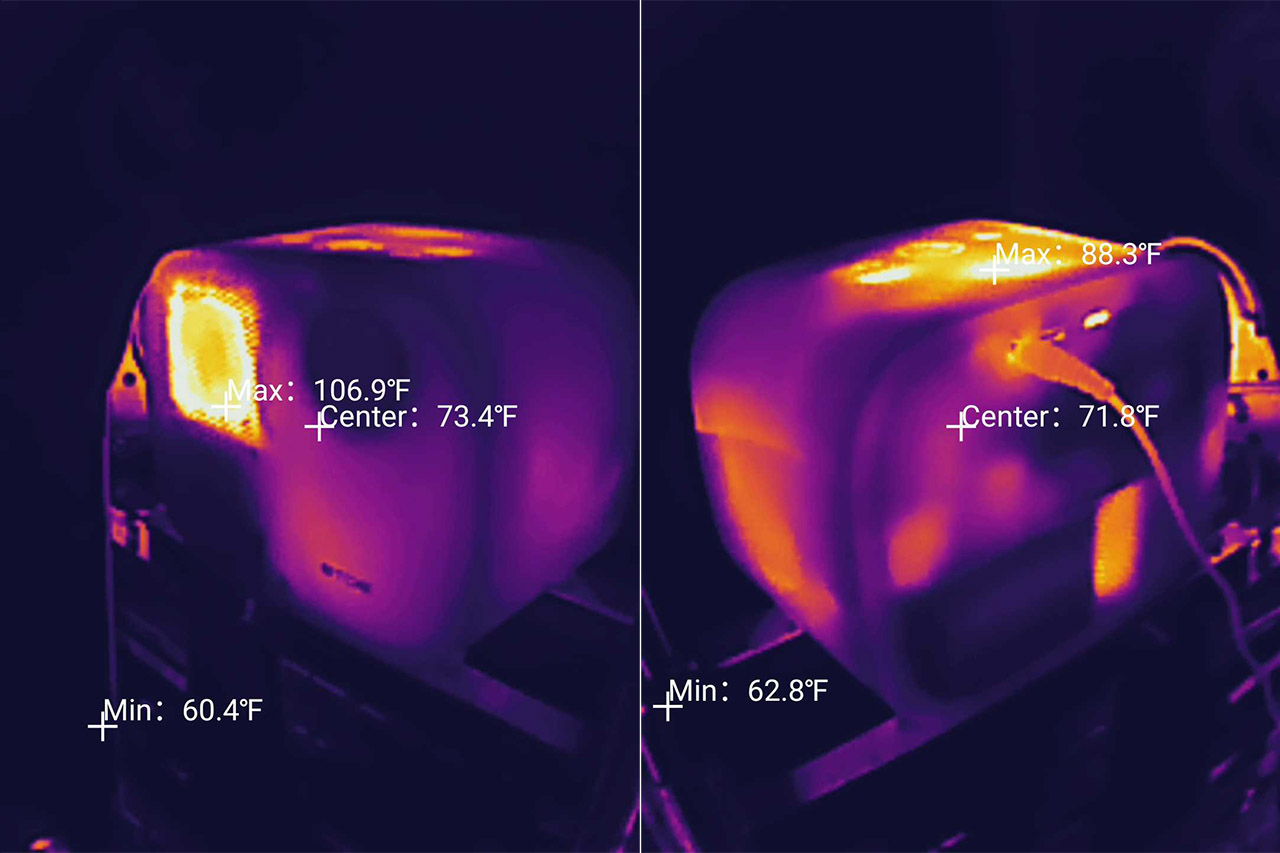
That’s why I mentioned the potential modular aspect of the device since I am sure it’s possible to swap it for any other Android box out there, as long as it fits. As for the ports, there aren’t many, but I guess the ETOE E3 Pro does cover the basics. There is a Power port followed by a USB-A port (2.0), an HDMI port and an AUX port for audio systems. In between them, the manufacturer has also included the IR receiver for the remote control. You can see through the plastic mesh that there are two speakers, one facing forward and the other backwards – it’s a very similar approach to the Xidu Philbeam S1.
The lens is slightly recessed within the body of the projector and ETOE says that they used a ‘fully-sealed dustproof optical engine’, so that dust won’t enter within the enclosure and alter the video quality. It may sound unnecessary, but I will mention the XIDU projector again which did have some issues exactly due to not having properly sealed the optical engine. Next to the lens, there is a ToF (Time of Flight) sensor which essentially emits a light beam and then it measures how long it takes until the light reaches the surface.
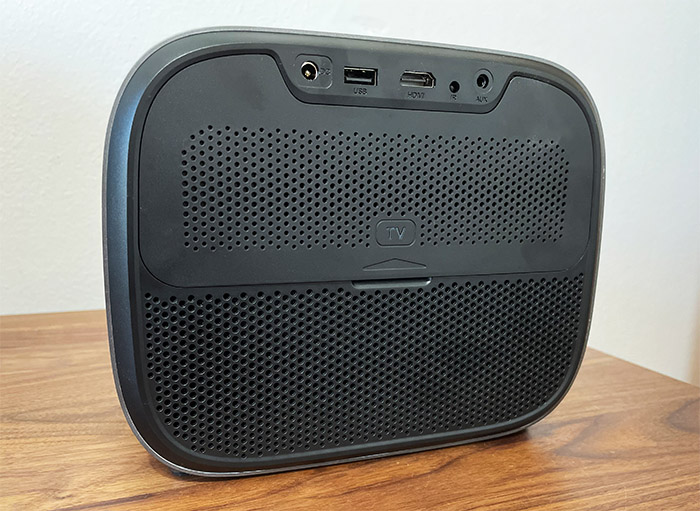
Based on the calculations, the ETOE E3 Pro should be able to accurately auto-focus the picture. It’s an interesting system, but I think a camera-based one would have been a bit better since I have seen it in action on the XGIMI Halo Plus and that object avoidance system was gorgeous. But I guess you can’t have everything at this price point.
ETOE E3 Pro Teardown
Projectors are complicated machines and it’s not easy to disassemble and reassemble them, so I decided to rely on the FCC ID photos. And I was satisfied up until I got a blurry picture of the Mediatek SoC. I could tell that there was 1GB of eMMC storage memory from Samsung (KLM8G1GETF-B041) and the inner components of the Android box, but I wanted to know the optical chip behind the ETOE E3 Pro.
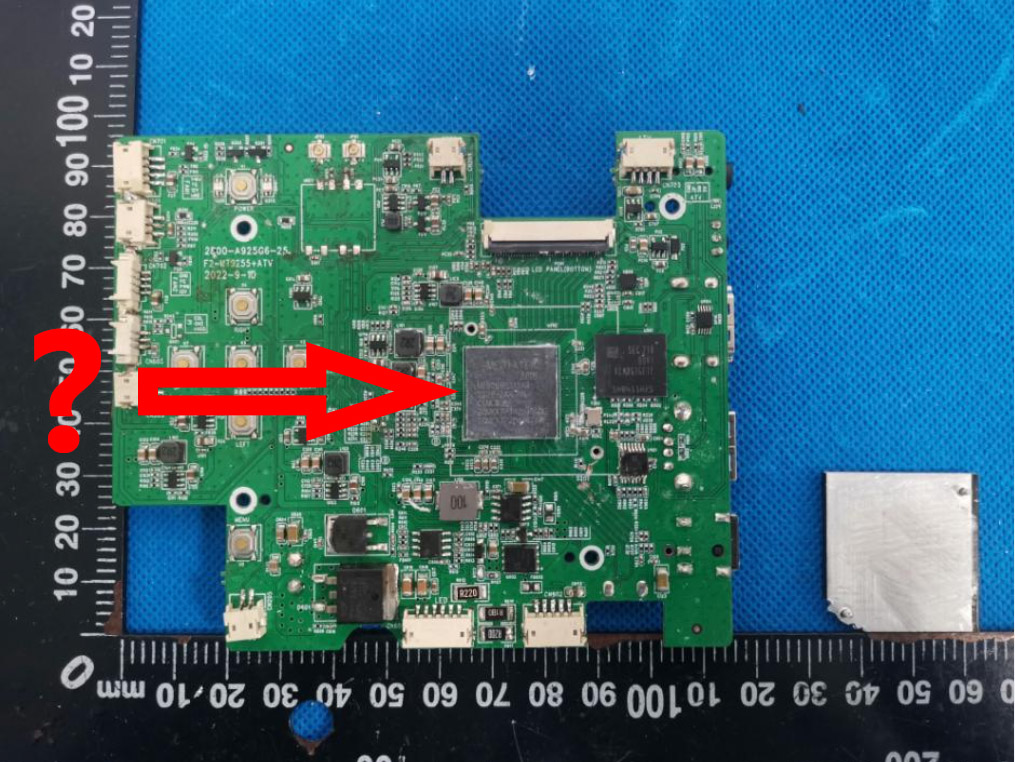
So I disassembled the projector myself. That’s how I found out about the two fans (one front facing, the other towards the bottom covered by an aluminum sink), as well as about the position of the speakers and the copper heatsink. And then I got to the PCB, only to find that the manufacturer soldered the heatsink above the SoC. That was just great. So we know that it’s a Mediatek, but I don’t think it uses a DMD 0.33” chipset from Texas Instruments, but take it as mere assumptions. I spoke with the manufacturer and the chip is a Mediatek MTK9269, not DMD from Texas Instruments.
If the ETOE E3 Pro does indeed use the DMD 0.33” chip to scale a 720p image, then there should be rainbow artifacts, but the image did not display this behavior, so I am fairly sure that there is no DMD chip behind the ETOE E3 Pro. Also, if you thought about opening the device yourself, you’re going to void the warranty since there are screws everywhere (underneath the silicone feet and under the label from the bottom side), so there is no way to keep the device in the same state as when you bought it.
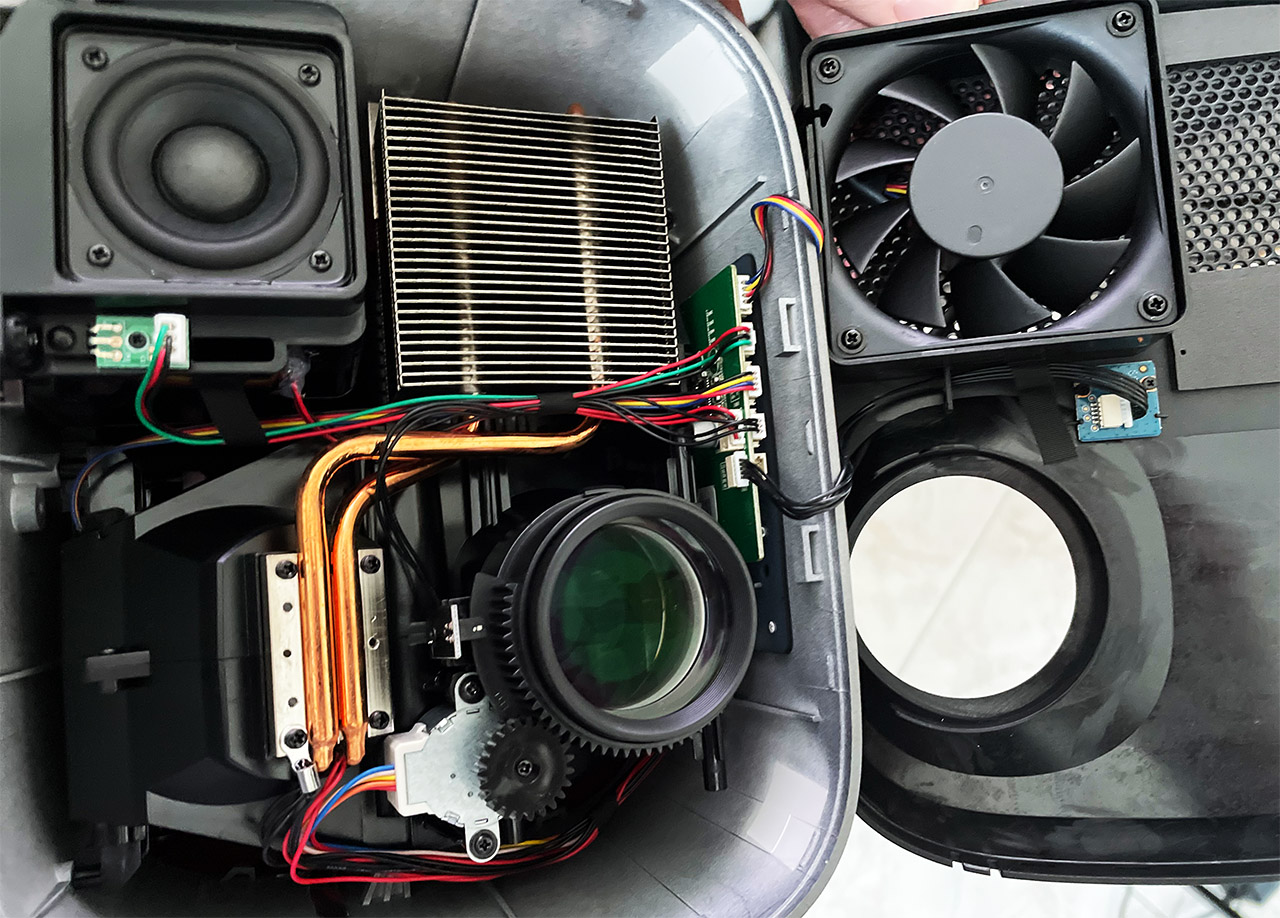
Now let’s talk a bit about the Android box. I could tell from the FCC ID photos that the box features an RTL8822CS BT WiFi module (802.11ac), 256MB 2GB of LPDDR4 RAM from ARTMEM (ATL4X16324M092) and 8GB of storage from SanDisk (SDINBDG4-8G).
The Remote Control
The ETOE E3 Pro comes with a small remote control made of plastic and, since we’re dealing with a projector, you only get a small amount of buttons but which are more than enough for navigating the Android OS. I almost forgot to mention that there are no batteries in the package, so you will have to buy your own (or just steal them from another remote, just like I did). The IR sensor is hidden on the front, behind a transparent glossy plastic piece and I also saw that there is a built-in microphone for giving voice commands to the projector (the mic sits next to the LED in a similar manner to the remote from the Sylvox Deck Pro TV).
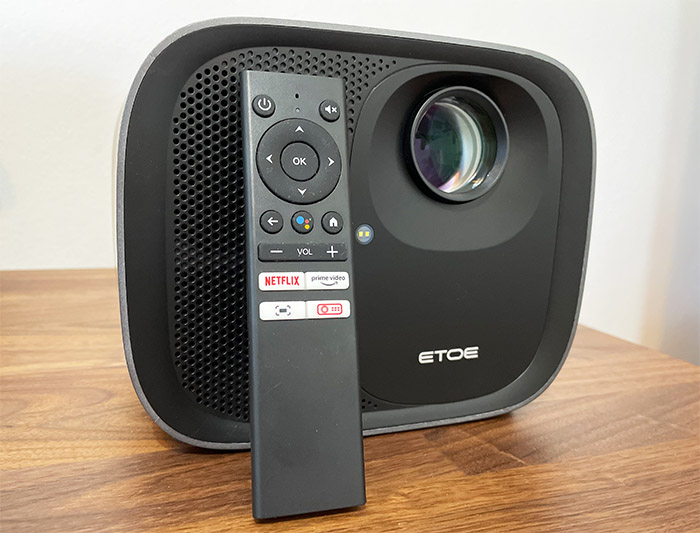
Other than that, you get the D-PAD for moving between options in the GUI, the OK and Return buttons, as well as the volume control. You get a dedicated Home button, a Google Assistant button and you also get shortcuts to Netflix and Prime Video. The last two buttons will allow you to adjust the focus (as well as enable the menu on a long press) and to go to the Homepage of the ETOE E3 Pro. Just like with other projectors and smart TVs, you will need to pair the remote so that it will communicate via Bluetooth as well as IR – press and hold the Volume Down + OK buttons for about three seconds.
Installation and Software Experience
After powering up the ETOE E3 Pro, I was asked to choose the language and to pair the remote control (press two buttons). Then, I was asked to select the language again which shows that the first time was some leftover code from a prior installation wizard or so I think. Afterwards, I connected the projector to the WiFi network and, since it supports 802.11ac, I used the 5GHz radio band for a better performance. After that, I had to sign into the Google account (you can’t really use the projector otherwise) and then Google will try to focus its big lenses on you.
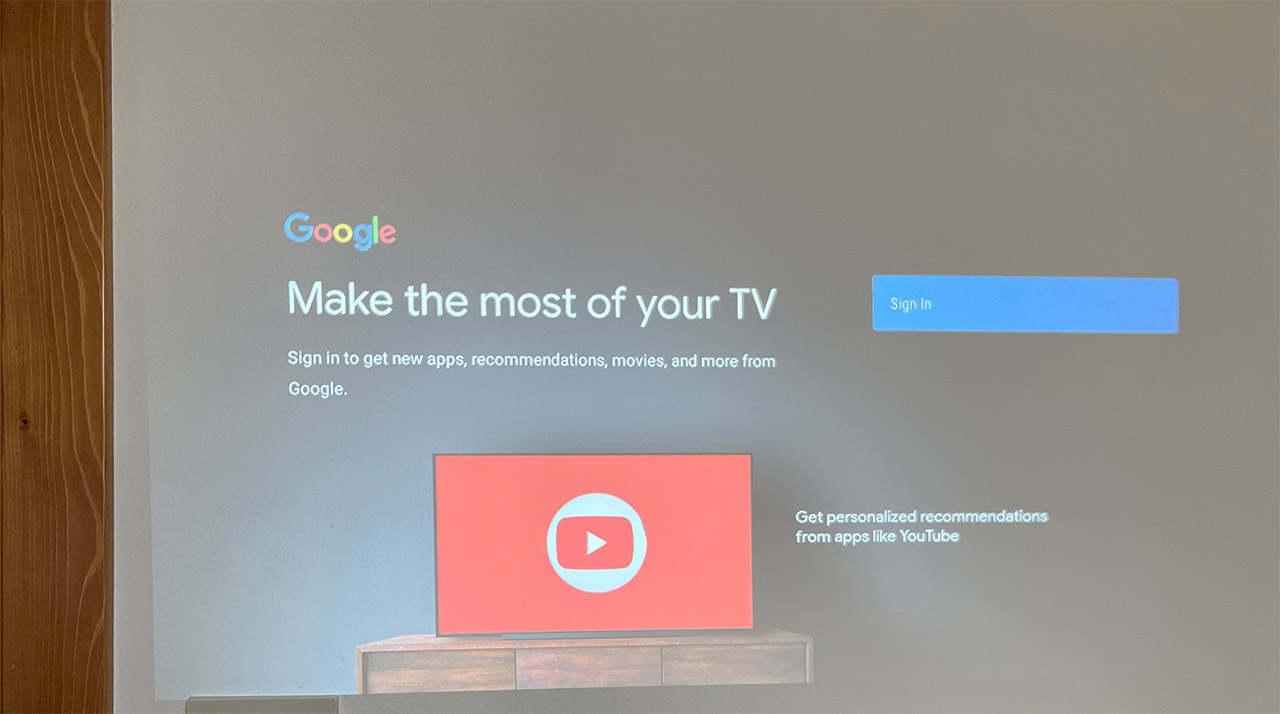
No Google, I will not give you access to my location, I don’t need your personalized ads, I am not adamant on the ‘better’ voice control, nor do I need your personalized results. I could also let the software install some Recommended apps, but I decided I will install what I need afterwards. Then, I could finally gain access to the OS interface. The Android TV version is fairly optimized, even though I wouldn’t really call it lightweight, but I suppose that the 2GB of RAM should be enough. For comparison sake, the Halo Plus was able to offer a smooth experience thanks to its 2GB of RAM. That being said, while navigating the Android TV interface (version 10), I didn’t see any stutters, but there is a certain delay between the press of a button and seeing the change on the projected image.
Furthermore, while watching a movie on Prime and Netflix, when I wanted to skip forward or go back to a certain scene, there is about a second of delay where you need to insist on the action for it to be registered. I know I am nitpicking a bit because like I said, the screen never froze and there was no stuttering, but neither was the experience perfectly smooth.
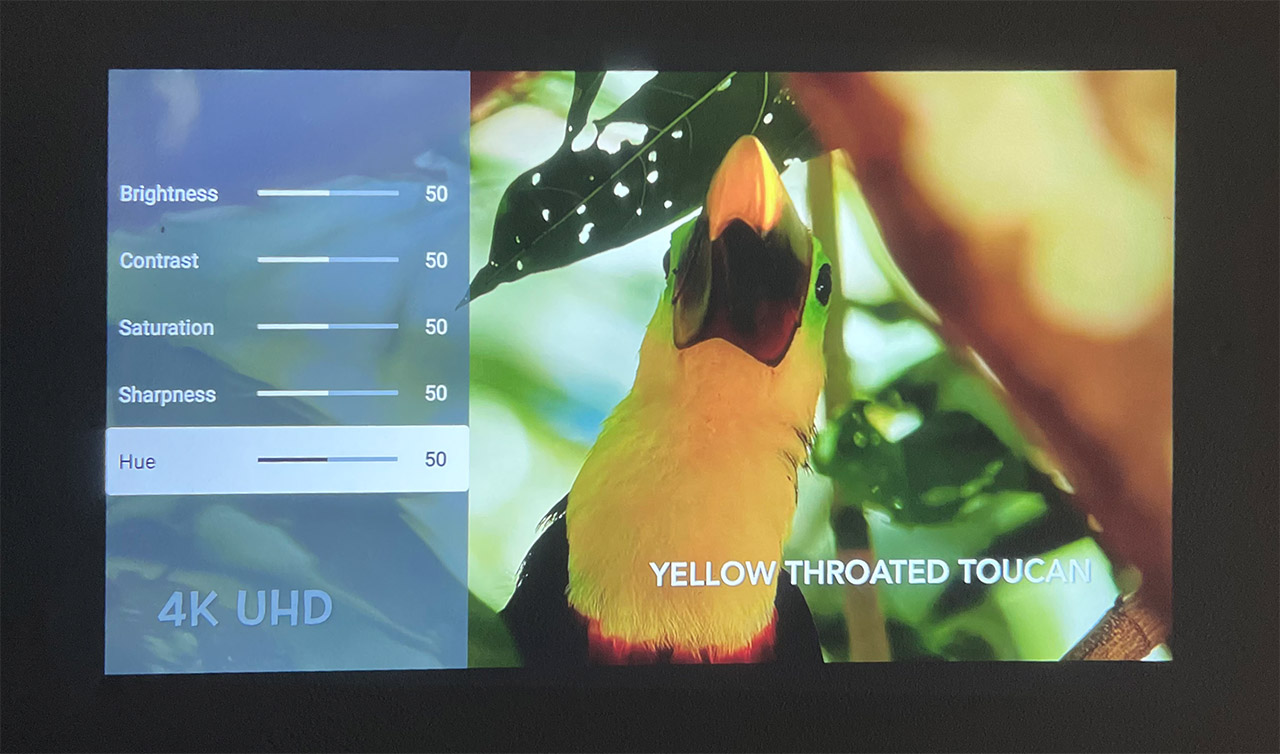
It’s about average, I guess. It’s worth mentioning that I didn’t have to do some weird workarounds to get Netflix since it was already added to the suite of apps (unlike on XGIMI projectors) and it’s possible to change some projector settings from the menu. It’s nothing too complex because you can change the Image and Sound Mode, the Aspect Ratio, the Color Temperature and the Projection Settings (you can basically zoom out). But there had to be a weird behavior here as well.
If you’re listening to something on YouTube or watching a movie and want to adjust anything from the menu, the remote will casually forget that you opened the menu and it will navigate the Netflix or YouTube interface instead. The ETOE E3 Pro also has built-in Chromecast, so you can connect to other compatible devices (phone, PCs, tablets) and stream data.
The Automatic Adjustments
Considering the price tag of the ETOE E3 Pro, it’s a bit ridiculous (in the good sense) that the projector actually has auto-focus and auto keystone correction. But it does and it seems to be working relatively well.
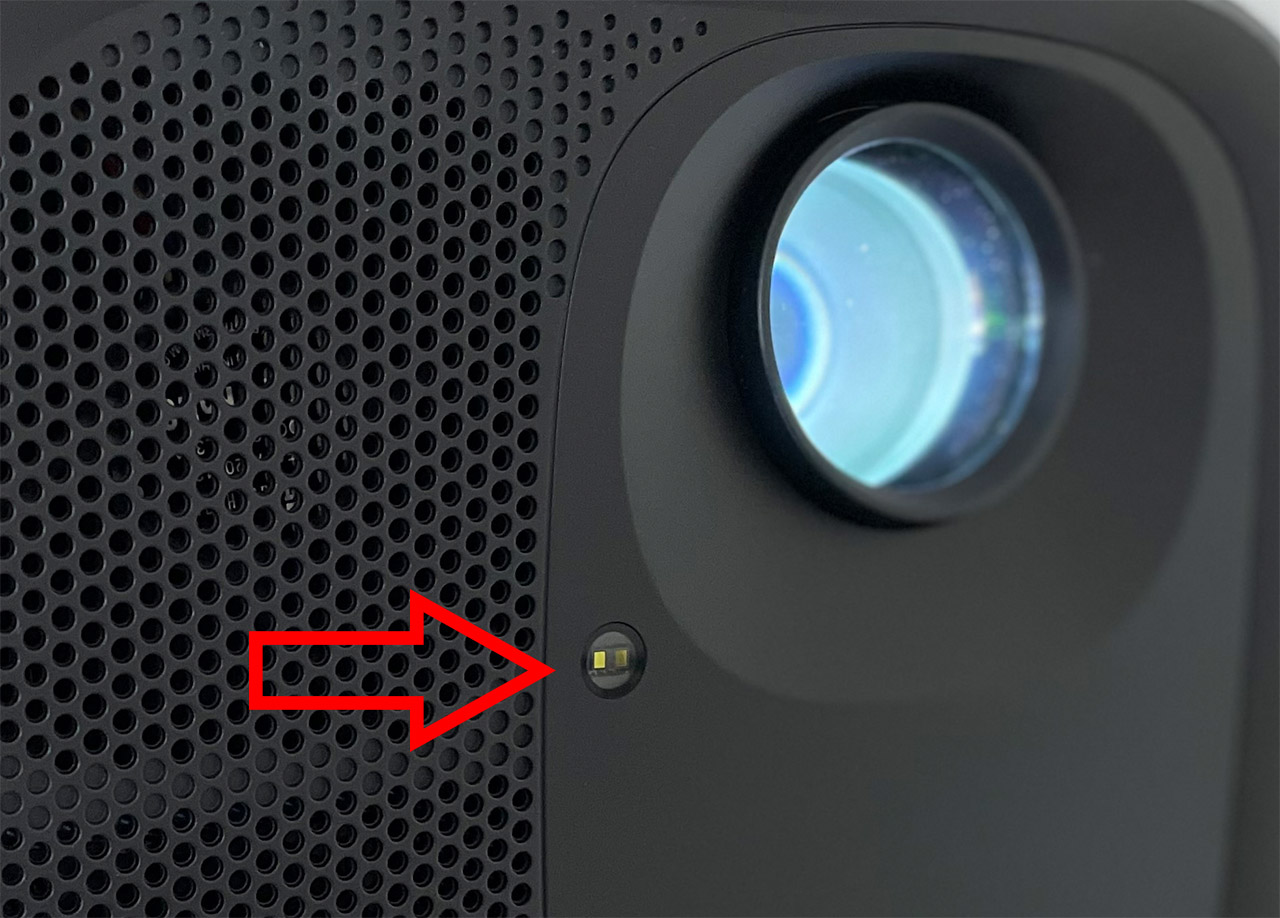
I have seen the ToF sensor in the front of the projector which is supposed to help with the auto-focus, so I decided to move the ETOE E3 Pro forward and backward and see if we’ll get a good focus automatically. It’s not an instantaneous process, but a few seconds in both the auto-focus and the auto keystone correction got into action – so I guess that the beam of light is sent every few seconds. And yes, the autofocus worked well, but what about the auto keystone correction?
It doesn’t work when the angle is too large (I actually got a warning when I got too vain) and sometimes it gets it right, other times I had to adjust the corners manually by a tiny bit. ETOE says that “to ensure the visual effect, their automatic trapezoidal correction and autofocus are ±40°”. But as I said before, I can’t complain considering the price tag. You do get the option to adjust both the auto-focus and the auto keystone correction manually, the former actually has a dedicated button on the remote (the one underneath the Netflix button). So, in case you’re not satisfied by the automatic adjustments, you can adjust the image to your own liking. After more extensive testing, I have discovered an issue.
ETOE E3 Pro
-Pros
- Good image quality, considering the price tag
- Auto focus and auto keystone correction
- The image is very bright (and it can get brighter since the default is 50%)
- Android TV (v10)
- Loud speakers
Cons
- The auto focus and the auto keystone correction sometimes don't immediately start after powering up the projector
- The sound discrepancy between the Android box and the projector is no longer a minus since it has been fixed with the latest firmware
- The remote controls a part of the functions of the device, while the physical buttons another part

Mark is a graduate in Computer Science, having gathered valuable experience over the years working in IT as a programmer. Mark is also the main tech writer for MBReviews.com, covering not only his passion, the networking devices, but also other cool electronic gadgets that you may find useful for your every day life.

